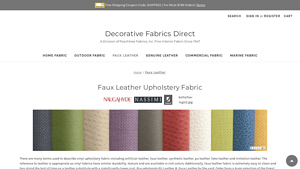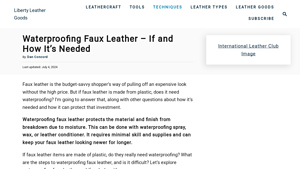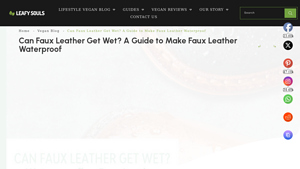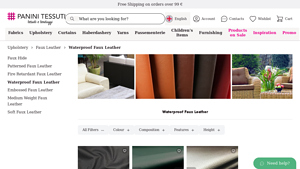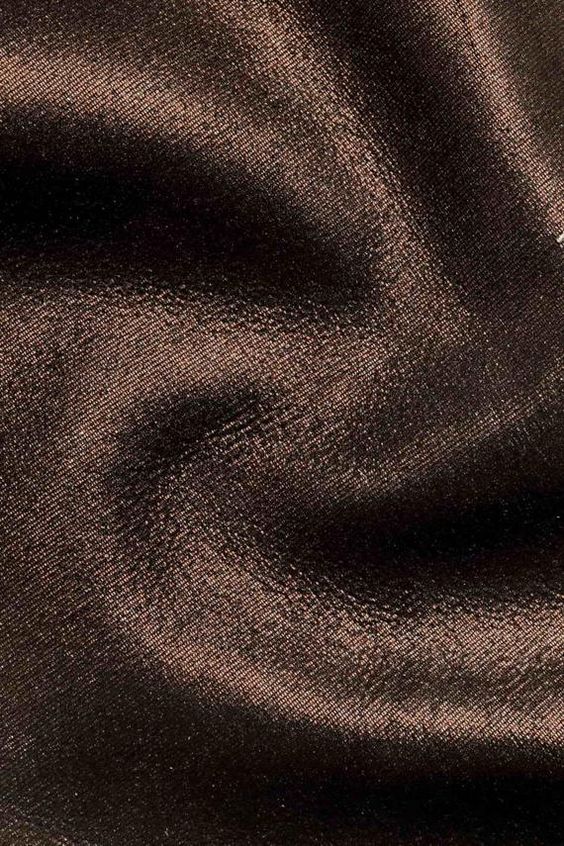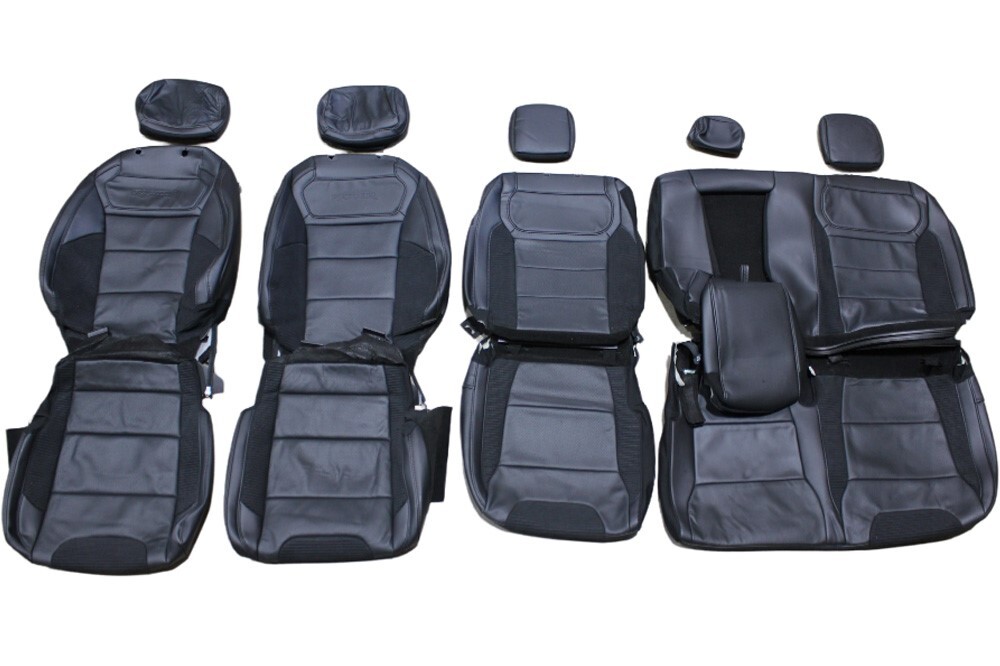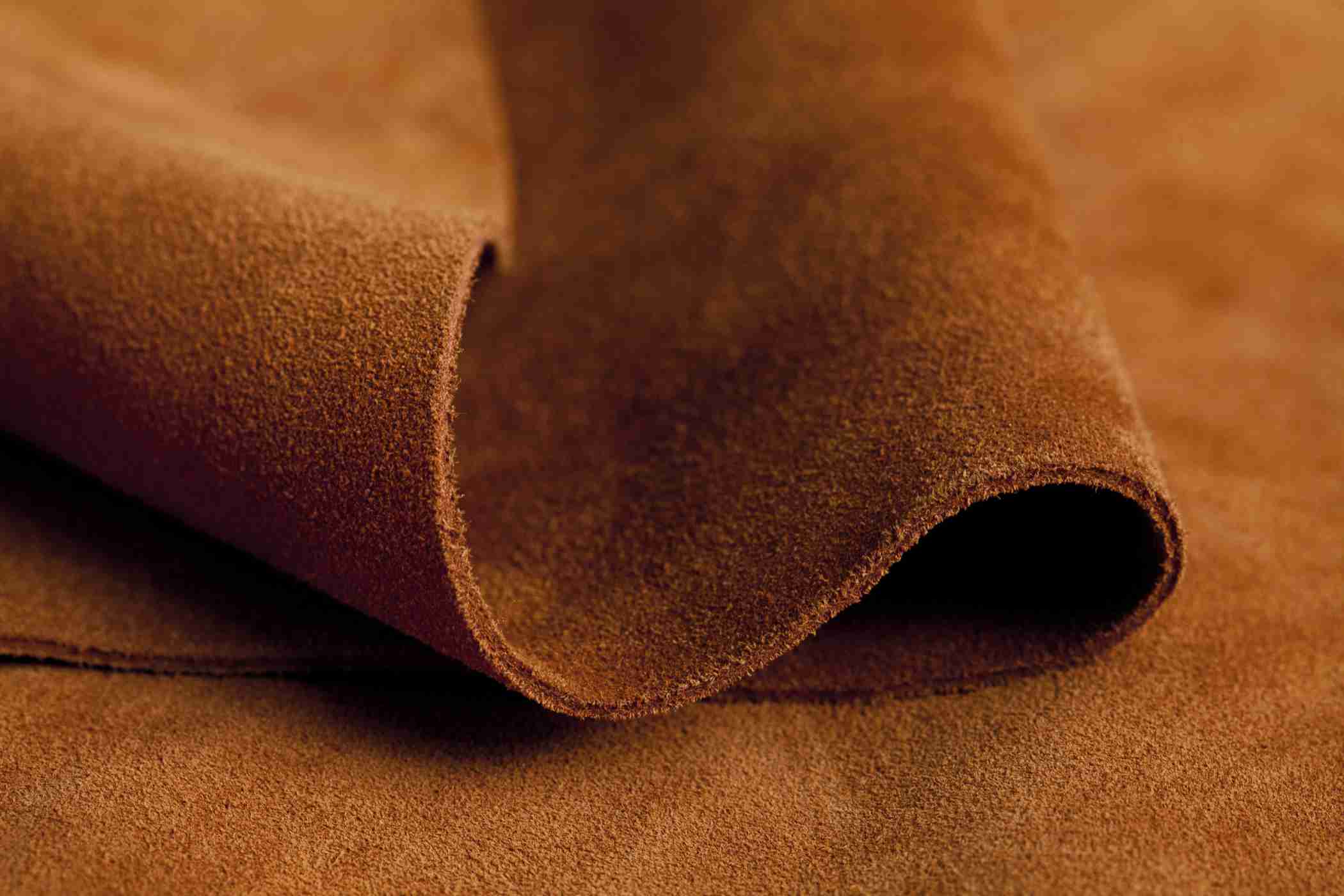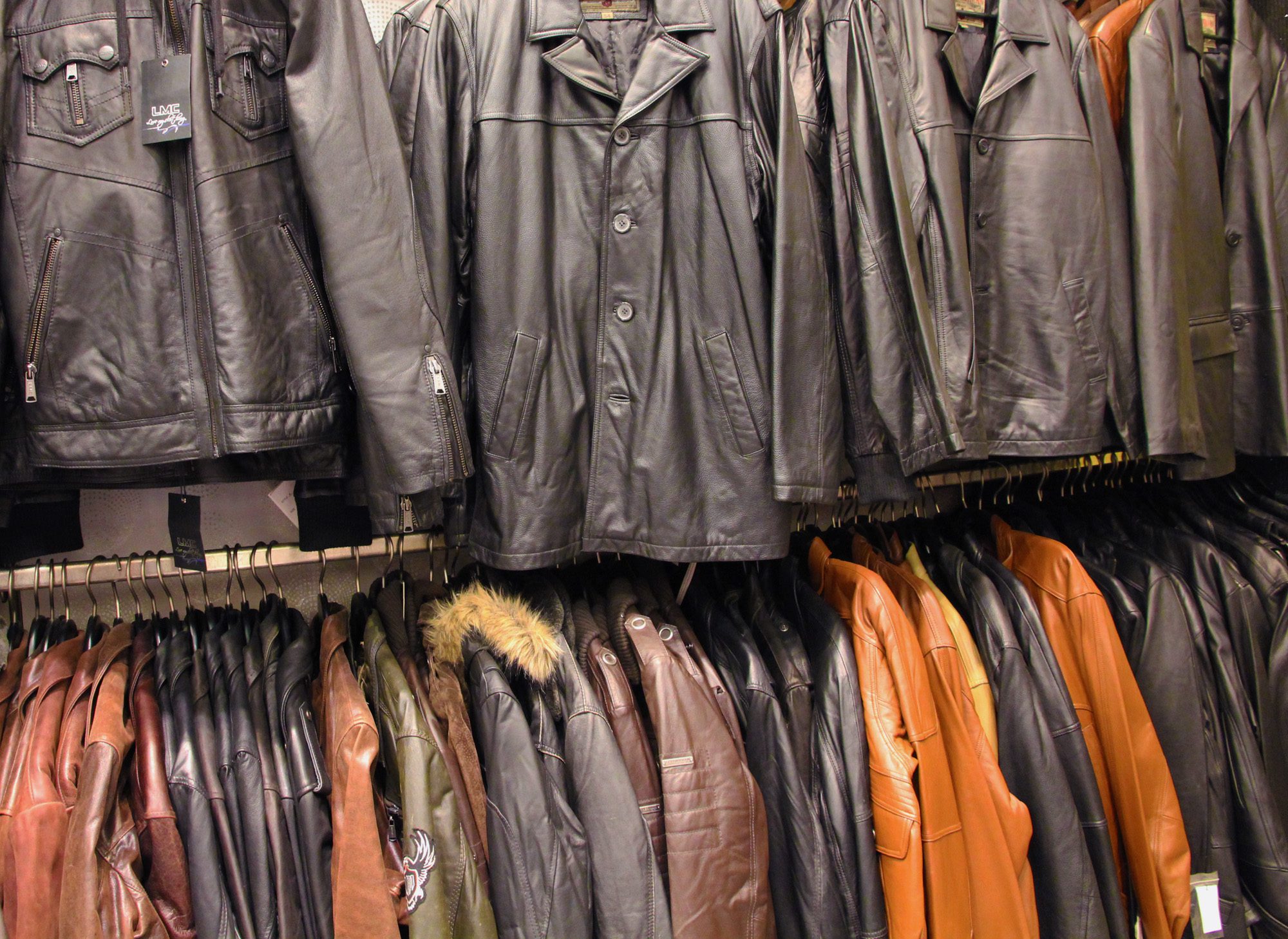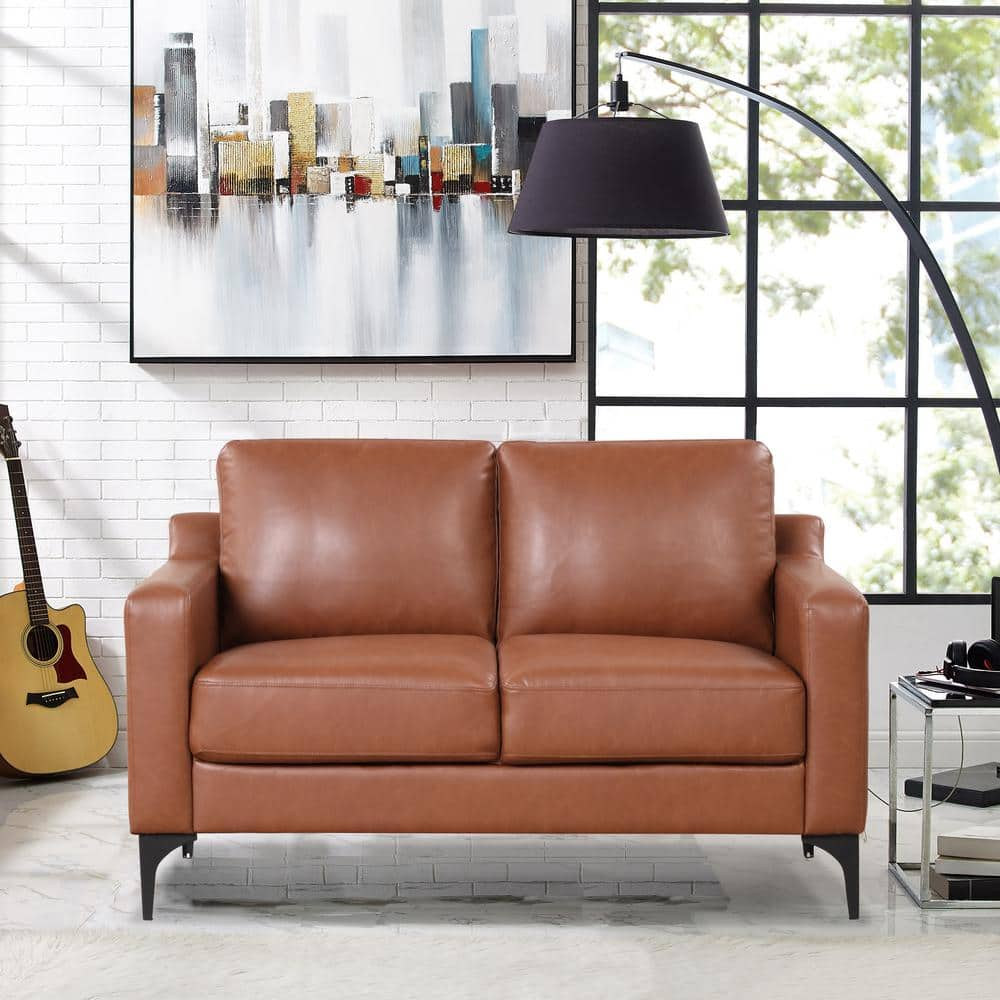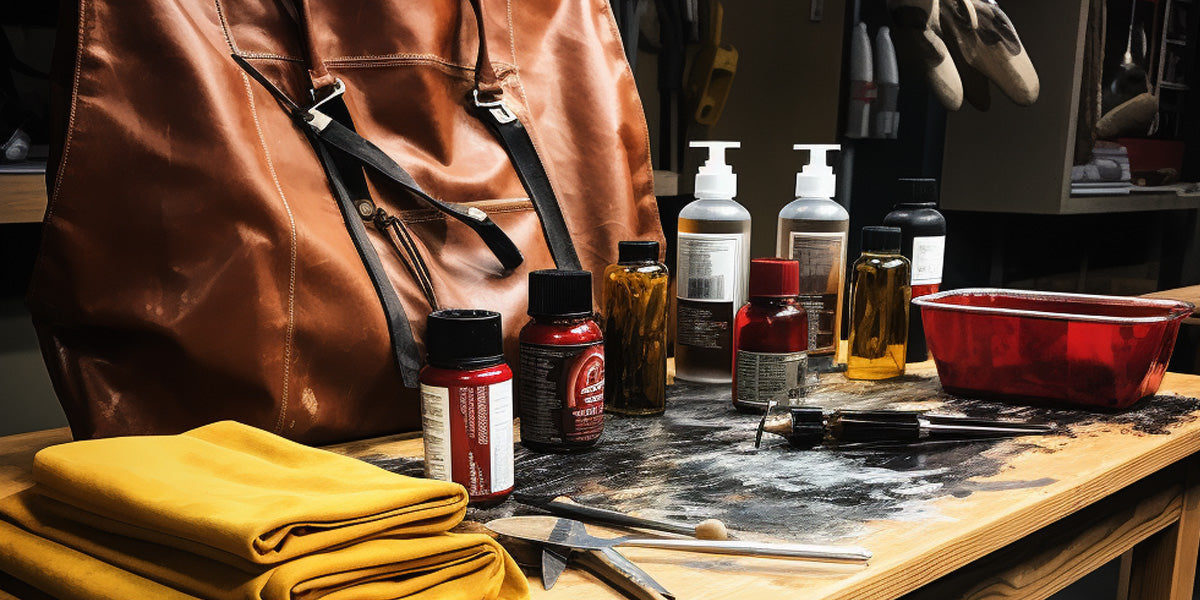Introduction: Navigating the Global Market for waterproof faux leather
In today’s competitive landscape, sourcing high-quality waterproof faux leather presents a significant challenge for international B2B buyers, especially those operating in regions like Africa, South America, the Middle East, and Europe. As businesses strive to meet consumer demand for sustainable, cost-effective alternatives to genuine leather, understanding the intricacies of faux leather options becomes essential. This guide delves deep into the world of waterproof faux leather, exploring various types, applications, and the nuances of supplier vetting to ensure you make informed purchasing decisions.
From upholstery for commercial furniture to automotive and marine applications, the versatility of waterproof faux leather can significantly enhance product offerings while reducing costs. Buyers will find insights on the latest trends in faux leather technology, including the benefits of polyurethane (PU) and polyvinyl chloride (PVC) options, as well as practical tips for maintenance and waterproofing. Additionally, this guide addresses critical considerations such as cost structures, supplier reliability, and compliance with local regulations, ensuring that your procurement process is seamless and efficient.
By equipping B2B buyers with actionable insights and a comprehensive understanding of the market, this guide empowers you to confidently navigate the complexities of sourcing waterproof faux leather. Embrace the opportunity to elevate your product line while aligning with sustainability goals, all while staying ahead of market trends and consumer preferences.
Table Of Contents
- Top 4 Waterproof Faux Leather Manufacturers & Suppliers List
- Introduction: Navigating the Global Market for waterproof faux leather
- Understanding waterproof faux leather Types and Variations
- Key Industrial Applications of waterproof faux leather
- 3 Common User Pain Points for ‘waterproof faux leather’ & Their Solutions
- Strategic Material Selection Guide for waterproof faux leather
- In-depth Look: Manufacturing Processes and Quality Assurance for waterproof faux leather
- Practical Sourcing Guide: A Step-by-Step Checklist for ‘waterproof faux leather’
- Comprehensive Cost and Pricing Analysis for waterproof faux leather Sourcing
- Alternatives Analysis: Comparing waterproof faux leather With Other Solutions
- Essential Technical Properties and Trade Terminology for waterproof faux leather
- Navigating Market Dynamics and Sourcing Trends in the waterproof faux leather Sector
- Frequently Asked Questions (FAQs) for B2B Buyers of waterproof faux leather
- Strategic Sourcing Conclusion and Outlook for waterproof faux leather
- Important Disclaimer & Terms of Use
Understanding waterproof faux leather Types and Variations
| Type Name | Key Distinguishing Features | Primary B2B Applications | Brief Pros & Cons for Buyers |
|---|---|---|---|
| Couro PU | Soft texture, high flexibility, and resembles genuine leather | Upholstery for furniture, automotive, and marine sectors | Pros: Affordable, easy to clean. Cons: May require waterproofing for longevity. |
| Couro PVC | Durable, water-resistant, often used in outdoor applications | Outdoor furniture, marine upholstery, and fashion accessories | Pros: Cost-effective, highly resistant to moisture. Cons: Less breathable than PU. |
| Couro de microfibra | Soft, breathable, and eco-friendly alternative to traditional leather | Fashion, automotive interiors, and upholstery | Pros: Sustainable, easy maintenance. Cons: May be less durable under heavy use. |
| Coated Faux Leather | Features a protective layer for enhanced waterproofing | High-traffic commercial spaces, healthcare facilities | Pros: Excellent water resistance, durable. Cons: Potential for wear on the coating over time. |
| Recycled Faux Leather | Made from repurposed materials, eco-friendly options | Sustainable fashion, environmentally conscious brands | Pros: Sustainable, unique aesthetics. Cons: Availability may be limited. |
What Are the Key Characteristics of PU Leather for B2B Buyers?
Polyurethane (PU) leather is a popular choice among B2B buyers due to its soft texture and high flexibility, closely mimicking genuine leather. It is widely used in upholstery for furniture, automotive interiors, and marine applications. Buyers should consider that while PU leather is generally affordable and easy to clean, it may require additional waterproofing treatments to enhance its longevity, especially in humid environments.
How Does PVC Leather Stand Out in the Market?
Polyvinyl chloride (PVC) leather is recognized for its durability and water-resistant properties, making it ideal for outdoor applications such as patio furniture and marine upholstery. Its affordability is a significant advantage for businesses looking to minimize costs. However, buyers should note that PVC leather is less breathable than PU leather, which may affect comfort in certain applications.
Why Choose Microfiber Leather for Your B2B Needs?
Microfiber leather is an eco-friendly alternative that combines softness and breathability, making it suitable for fashion and automotive interiors. Its sustainable composition appeals to environmentally conscious brands. While microfiber leather is easy to maintain, buyers should be aware that it may not be as durable as other options in high-traffic environments, necessitating careful consideration of its application.
What Are the Benefits of Coated Faux Leather?
Coated faux leather features a protective layer that enhances its waterproofing capabilities, making it an excellent choice for high-traffic commercial spaces and healthcare facilities. This type is known for its excellent water resistance and durability. However, potential buyers should keep in mind that the coating may wear over time, requiring periodic maintenance to preserve its appearance and functionality.
How Does Recycled Faux Leather Address Sustainability Concerns?
Recycled faux leather is crafted from repurposed materials, positioning it as a sustainable option for businesses focused on environmental responsibility. It is often used in sustainable fashion and by brands that prioritize eco-friendly practices. While its unique aesthetics can attract consumers, buyers should consider the potential limitations in availability and consistency in quality compared to more conventional materials.
Key Industrial Applications of waterproof faux leather
| Industry/Sector | Specific Application of waterproof faux leather | Value/Benefit for the Business | Key Sourcing Considerations for this Application |
|---|---|---|---|
| Furniture Manufacturing | Upholstery for residential and commercial furniture | Durable, easy to clean, and cost-effective alternative to leather | Ensure compliance with fire safety and durability standards |
| Automotive | Interior seating and trim materials | Lightweight, water-resistant, and aesthetically appealing | Evaluate material performance in extreme temperatures |
| Marine Industry | Boat upholstery and covers | Weather-resistant and mold-resistant for prolonged use | Source from suppliers with marine-grade certifications |
| Fashion and Accessories | Bags, wallets, and apparel | Trendy, sustainable alternative to animal leather | Focus on eco-friendly production methods |
| Hospitality Industry | Seating and decor for hotels and restaurants | Enhances aesthetic appeal while being easy to maintain | Consider color and design variety for branding opportunities |
How is Waterproof Faux Leather Used in Furniture Manufacturing?
In the furniture manufacturing sector, waterproof faux leather is primarily used for upholstery in both residential and commercial settings. Its durability and ease of cleaning make it ideal for high-traffic areas such as hotels and restaurants. Buyers from Africa, South America, and Europe should consider sourcing materials that meet specific fire safety and durability standards, ensuring compliance with local regulations and enhancing customer satisfaction.
What Role Does Waterproof Faux Leather Play in the Automotive Industry?
Waterproof faux leather is extensively utilized in the automotive industry for interior seating and trim materials. Its lightweight and water-resistant properties contribute to vehicle performance and longevity. For international buyers, particularly from regions like the Middle East and Europe, it is crucial to evaluate the material’s performance in extreme temperatures and its resistance to wear and tear, ensuring a high-quality end product that meets consumer expectations.
Why is Waterproof Faux Leather Important in the Marine Industry?
In the marine industry, waterproof faux leather is employed for boat upholstery and covers due to its weather-resistant and mold-resistant qualities. This material ensures that boat interiors remain protected from the harsh marine environment, extending their lifespan. Buyers should prioritize sourcing from suppliers who offer marine-grade certifications, ensuring that the faux leather can withstand exposure to saltwater and UV rays.
How is Waterproof Faux Leather Transforming Fashion and Accessories?
Waterproof faux leather has become a popular choice in the fashion and accessories sector, used in products like bags, wallets, and apparel. Its trendy appearance and sustainable production methods appeal to environmentally conscious consumers. B2B buyers should focus on suppliers who emphasize eco-friendly production processes and offer a diverse range of colors and styles, aligning with current fashion trends.
What Advantages Does Waterproof Faux Leather Provide in the Hospitality Industry?
In the hospitality industry, waterproof faux leather is used for seating and decor in hotels and restaurants, enhancing aesthetic appeal while being easy to maintain. Its stain-resistant properties are particularly beneficial in high-use environments. For international buyers, considering the variety of colors and designs available can provide branding opportunities that resonate with target audiences, making it an attractive option for enhancing guest experiences.
3 Common User Pain Points for ‘waterproof faux leather’ & Their Solutions
Scenario 1: Ensuring Longevity in Humid Climates
The Problem: B2B buyers in regions with high humidity, such as parts of Africa and South America, often face challenges with the durability of waterproof faux leather products. While faux leather is marketed as water-resistant, consistent exposure to moisture can lead to issues like mold growth and material breakdown. This concern is particularly pressing for businesses in the hospitality industry, such as hotels and restaurants, where maintaining an appealing environment is crucial. If faux leather upholstery begins to show signs of wear or mold, it can detract from the customer experience and necessitate costly replacements.
The Solution: To ensure the longevity of waterproof faux leather in humid climates, it is essential to select high-quality materials that are specifically designed for such conditions. When sourcing faux leather, buyers should prioritize products that have undergone rigorous testing for water resistance and mold prevention. Additionally, applying a protective waterproofing spray or wax can create an extra barrier against moisture. Regular maintenance, including periodic reapplication of these protective treatments, will help sustain the material’s integrity over time. Buyers should also consider establishing a cleaning schedule that includes the use of mild, non-abrasive cleaners to prevent degradation while keeping the surface fresh and inviting.
Scenario 2: Meeting Diverse Design Requirements
The Problem: B2B buyers in the furniture manufacturing and automotive sectors often encounter design challenges when sourcing waterproof faux leather. With varying aesthetics and functional requirements, they need materials that not only meet waterproof specifications but also align with specific color palettes and textures. This can be particularly challenging when catering to clients with unique branding or design preferences, leading to potential delays in product delivery and client dissatisfaction.
The Solution: To address these design requirements effectively, B2B buyers should collaborate closely with suppliers that offer customizable options in waterproof faux leather. Engaging in direct discussions about color matching, texture variations, and pattern capabilities can lead to more tailored solutions that meet client needs. Establishing a strong partnership with manufacturers allows for better insights into the material’s capabilities and limitations, enabling buyers to make informed decisions. Additionally, leveraging samples and prototypes can facilitate a more accurate representation of the final product, ensuring that it aligns with the intended design before full-scale production begins.
Scenario 3: Understanding the Cost Implications of Quality
The Problem: In a competitive market, B2B buyers often grapple with balancing cost and quality when sourcing waterproof faux leather. Lower-priced options may initially seem appealing, but they can lead to hidden costs down the line, such as frequent replacements or repairs due to inferior performance. This dilemma is particularly pronounced for businesses in the fashion and upholstery industries, where the longevity and appearance of materials directly impact brand reputation.
The Solution: To mitigate the risks associated with low-cost faux leather, buyers should conduct thorough market research to identify reputable suppliers known for high-quality products. Investing in premium waterproof faux leather can ultimately reduce long-term costs by decreasing the frequency of replacements and maintenance. Buyers can also negotiate bulk purchasing agreements or long-term contracts with suppliers to secure better pricing on high-quality materials. Establishing a clear understanding of the total cost of ownership, which includes maintenance and replacement factors, will empower buyers to make smarter purchasing decisions that align with their budget while ensuring product excellence.
Strategic Material Selection Guide for waterproof faux leather
What Are the Common Materials Used for Waterproof Faux Leather?
When selecting materials for waterproof faux leather, B2B buyers should consider several commonly used options, each with distinct properties and applications. Understanding these materials can help in making informed purchasing decisions that align with specific project requirements and regional preferences.
How Does Polyurethane (PU) Leather Perform as a Waterproof Faux Leather Option?
Polyurethane (PU) leather is a widely recognized material in the faux leather market. It is created by applying a polyurethane coating to a fabric base, which gives it a soft, supple feel similar to genuine leather. PU leather is known for its excellent water resistance, making it suitable for various applications, including upholstery, automotive interiors, and marine environments.
Pros: PU leather is durable, easy to clean, and highly resistant to stains and mildew. Its flexibility in color and design allows for customization, appealing to diverse aesthetic preferences.
Cons: Although PU leather is generally cost-effective, it can be more expensive than other synthetic options. Additionally, it may not be as robust under extreme conditions, such as high temperatures or prolonged exposure to harsh chemicals.
Impact on Application: PU leather is compatible with a wide range of media, including adhesives and coatings, making it suitable for various manufacturing processes.
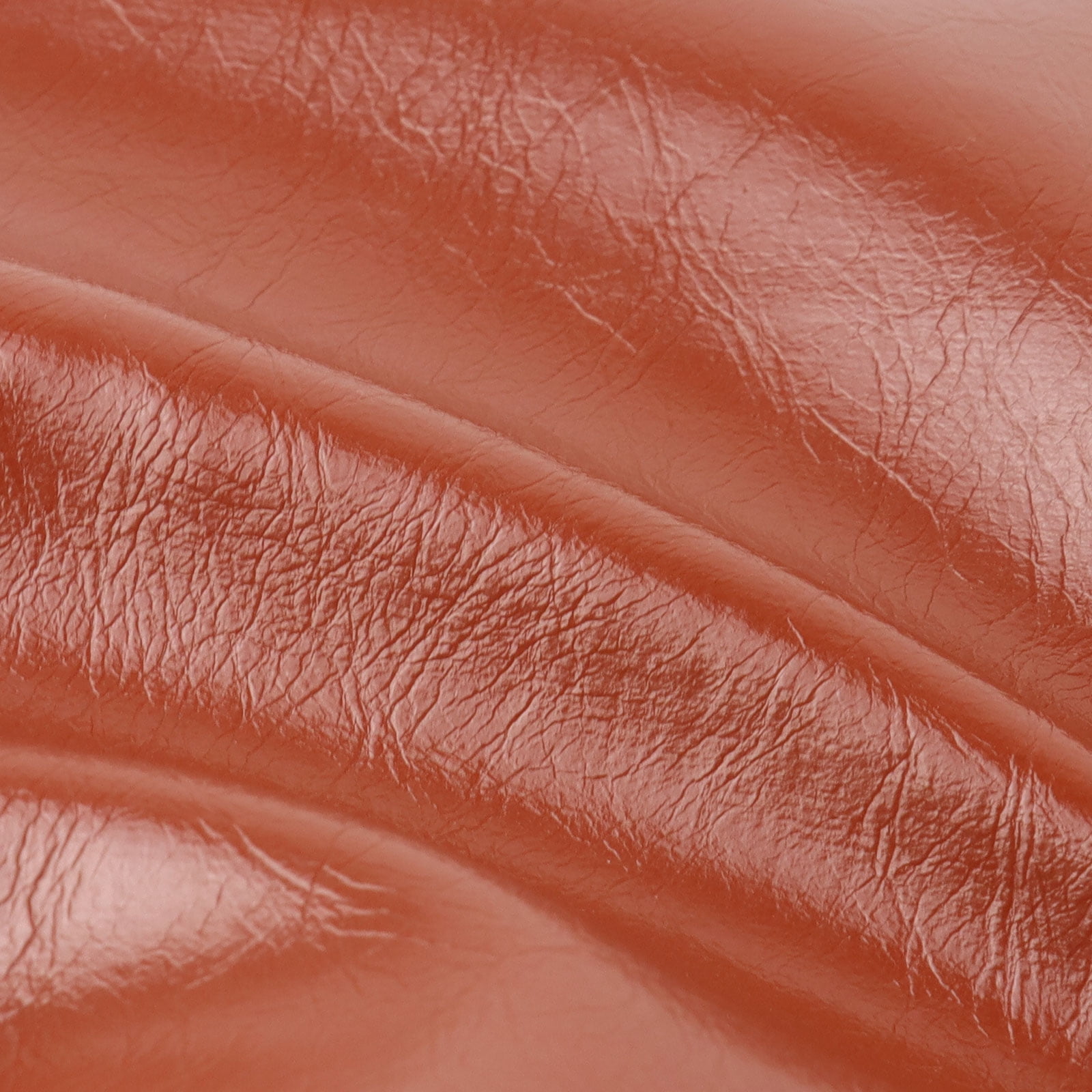
Illustrative image related to waterproof faux leather
Considerations for International Buyers: Compliance with international standards such as ASTM and DIN is essential, especially for buyers in regions like Europe and the Middle East. Buyers should also consider local preferences for sustainability, as PU leather is often viewed as a more environmentally friendly option compared to genuine leather.
What Role Does Polyvinyl Chloride (PVC) Play in Waterproof Faux Leather?
Polyvinyl chloride (PVC) is another common material used in the production of faux leather. It is typically less expensive than PU leather and can be manufactured to be waterproof, making it suitable for various applications, including outdoor furniture and automotive upholstery.
Pros: PVC is highly durable and resistant to abrasions, making it ideal for high-traffic areas. Its cost-effectiveness allows for bulk purchasing, appealing to budget-conscious buyers.
Cons: PVC can be less breathable than PU leather, which may lead to discomfort in certain applications. Additionally, it may not have the same luxurious feel as PU leather, which could affect consumer perception.
Impact on Application: PVC is compatible with various coatings and finishes, enhancing its waterproof properties. However, it may require additional treatment to improve its aesthetic appeal.
Considerations for International Buyers: Buyers in regions like Africa and South America should be aware of environmental regulations surrounding PVC, as its production and disposal can raise sustainability concerns.
How Does Microfiber Leather Compare in Terms of Waterproofing?
Microfiber leather, made from finely woven synthetic fibers, is another option for waterproof faux leather. It is often treated to enhance its water resistance, making it suitable for furniture, automotive, and fashion applications.
Pros: Microfiber leather is lightweight, soft, and highly durable. It is also easy to clean and maintain, making it appealing for both residential and commercial use.
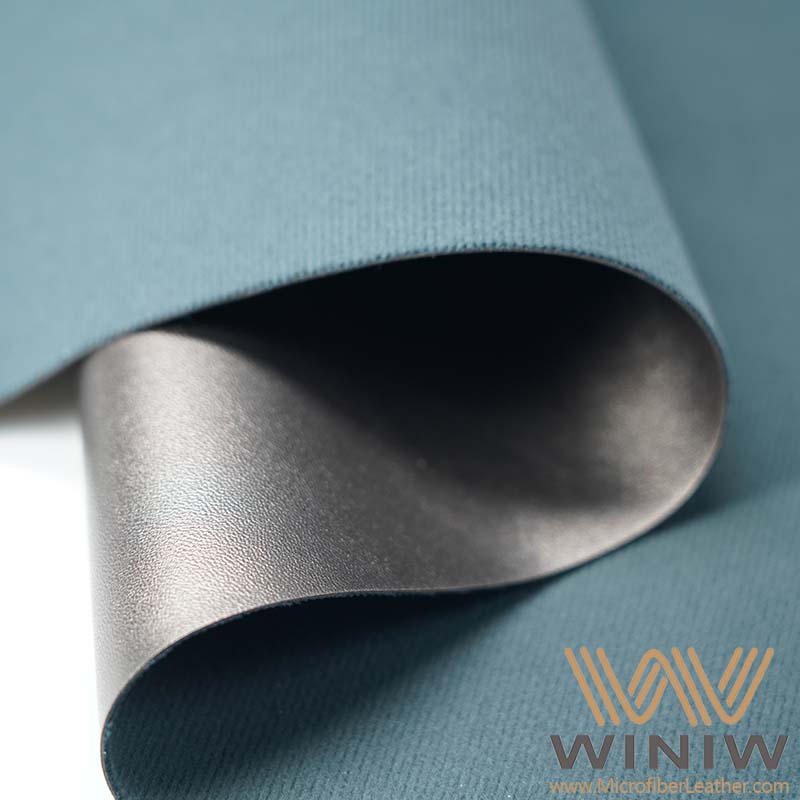
Illustrative image related to waterproof faux leather
Cons: While microfiber leather is often more expensive than PVC, it may not be as widely available in bulk quantities. Its performance can vary based on the manufacturing process and treatment used.
Impact on Application: Microfiber leather can be used in various applications, including upholstery and fashion accessories. Its compatibility with dyes and finishes allows for a wide range of design options.
Considerations for International Buyers: Buyers in Europe and the Middle East may prefer microfiber leather due to its sustainability credentials and animal-friendly production methods. Compliance with local regulations regarding textile manufacturing is also crucial.
What Advantages Does Recycled Faux Leather Offer for Waterproof Applications?
Recycled faux leather, made from repurposed materials like plastic bottles or old leather scraps, is gaining traction as a sustainable alternative. This material can be treated to enhance its waterproof properties, making it suitable for eco-conscious brands.
Pros: Recycled faux leather is often more affordable than traditional options and appeals to environmentally conscious consumers. Its production process can reduce waste, aligning with global sustainability goals.
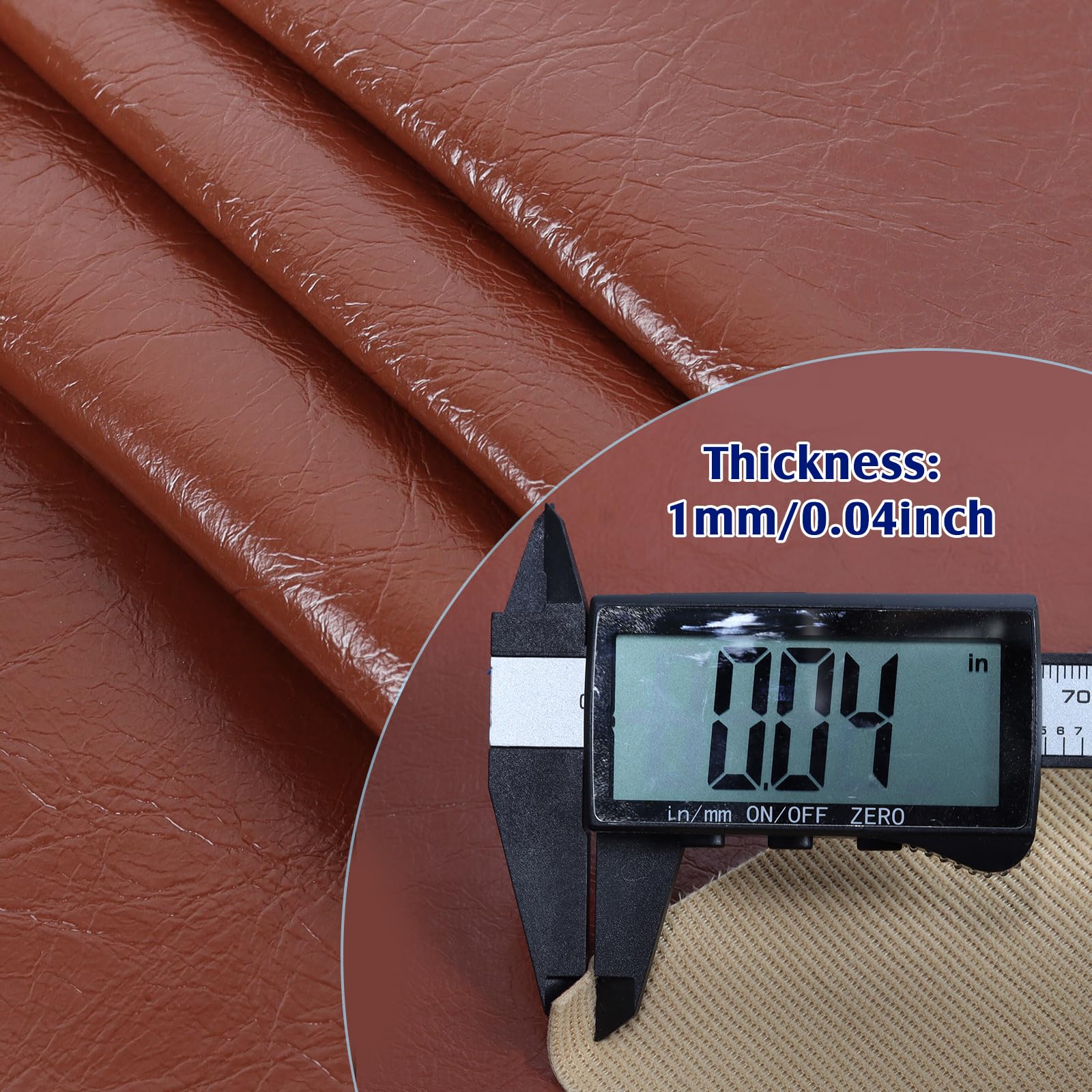
Illustrative image related to waterproof faux leather
Cons: The quality and durability of recycled faux leather can vary significantly based on the source materials and manufacturing processes. Buyers may need to conduct thorough quality assessments.
Impact on Application: This material can be used in a variety of applications, from upholstery to fashion, but may require specific treatments to ensure adequate waterproofing.
Considerations for International Buyers: Buyers from regions like Africa and South America should consider local demand for sustainable products. Compliance with environmental regulations and certifications can enhance marketability.
Summary Table of Waterproof Faux Leather Materials
| Material | Typical Use Case for waterproof faux leather | Key Advantage | Key Disadvantage/Limitation | Relative Cost (Low/Med/High) |
|---|---|---|---|---|
| Polyurethane (PU) Leather | Upholstery, automotive interiors, marine environments | Soft, durable, and easy to clean | Higher cost compared to other synthetics | Medium |
| Polyvinyl Chloride (PVC) | Outdoor furniture, automotive upholstery | Cost-effective and highly durable | Less breathable, may feel less luxurious | Low |
| Couro de microfibra | Upholstery, fashion accessories | Lightweight, soft, and easy to maintain | Can be more expensive, variable quality | Medium |
| Recycled Faux Leather | Upholstery, eco-friendly fashion products | Sustainable and affordable | Quality can vary, may need additional treatment | Medium |
In-depth Look: Manufacturing Processes and Quality Assurance for waterproof faux leather
What Are the Main Stages in the Manufacturing Process of Waterproof Faux Leather?
The manufacturing process of waterproof faux leather involves several critical stages, each designed to ensure the final product meets both aesthetic and functional requirements.
Material Preparation
The first stage involves selecting and preparing the base materials, which typically include a fabric backing made from polyester or cotton and a polymer coating, primarily polyurethane (PU) or polyvinyl chloride (PVC). The chosen materials must undergo rigorous testing to ensure they meet specifications for durability, flexibility, and waterproofing capabilities. Pre-treatment processes may also include dyeing the fabric backing to achieve desired color profiles.
Forming
Once materials are prepared, the next step is forming. This process involves applying the polymer coating onto the fabric backing. Techniques such as coating, lamination, or extrusion are commonly employed. In the coating method, the liquid polymer is evenly spread across the fabric, then cured through heat or UV exposure to create a durable and flexible surface. This step is crucial for achieving the desired waterproof properties, as the polymer layer acts as a barrier against moisture and contaminants.
Assembly
The assembly phase may vary depending on the intended application of the faux leather. For upholstery purposes, the material is cut into panels that can be sewn together or attached to frames, while automotive applications may require specialized shapes or dimensions. The assembly process must ensure that seams are sealed and reinforced to prevent water infiltration. Techniques such as ultrasonic welding can be employed to create strong, waterproof seams without the need for stitching.
Finishing
The final manufacturing stage is finishing, where additional treatments are applied to enhance the faux leather’s performance and aesthetic appeal. This may include applying a protective topcoat to increase resistance to stains, UV rays, and scratches. Quality control checks are performed at this stage to ensure that the finished product meets the specified criteria for texture, appearance, and waterproofing.
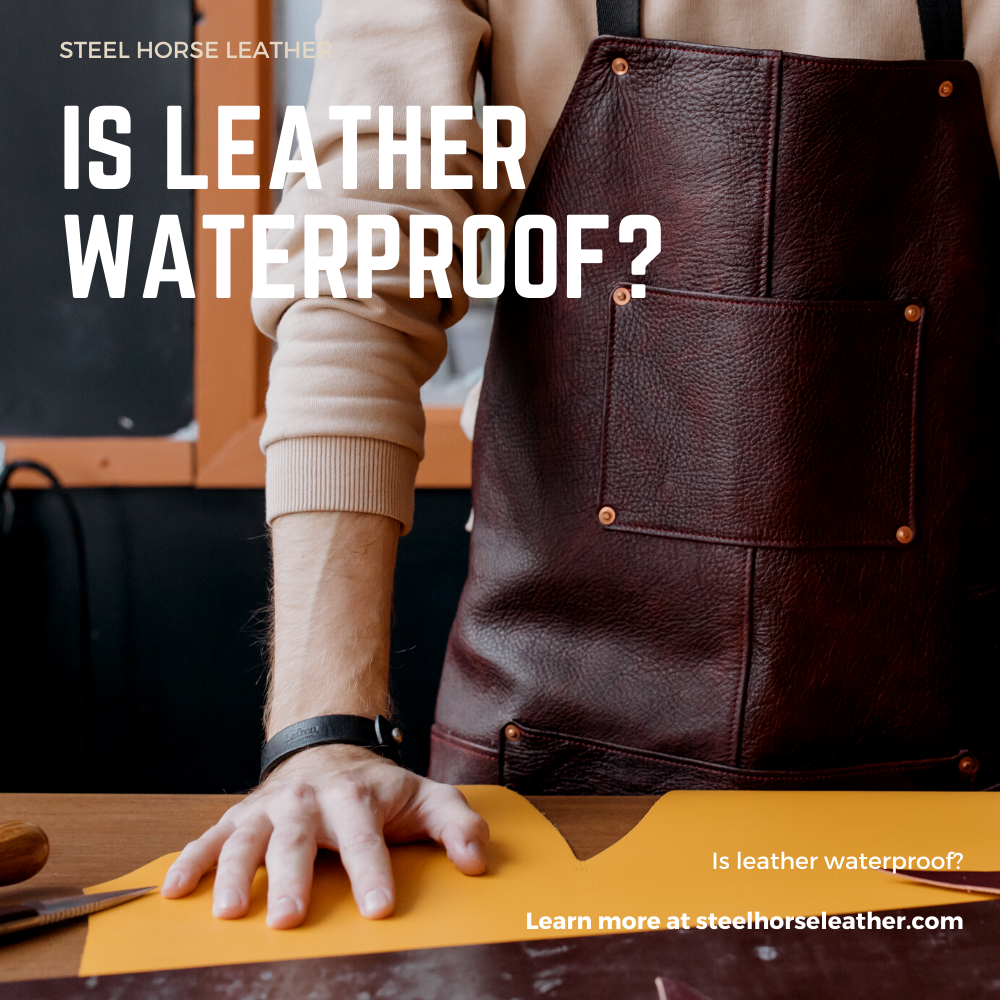
Illustrative image related to waterproof faux leather
What Quality Control Measures Are Essential for Waterproof Faux Leather?
Quality assurance in the production of waterproof faux leather is critical to ensure that the material performs as expected in various applications. Adhering to international standards, such as ISO 9001, is vital for establishing a quality management system that consistently meets customer requirements.
What International Standards Should Buyers Be Aware Of?
B2B buyers should be familiar with several international standards and certifications relevant to faux leather manufacturing. ISO 9001 focuses on quality management systems, ensuring that manufacturers implement continuous improvement processes. Additionally, certifications like CE mark and API standards may apply depending on the end-use of the product (e.g., automotive, marine). These certifications not only demonstrate compliance with safety and performance standards but also enhance the credibility of suppliers.
What Are the Key Quality Control Checkpoints in the Manufacturing Process?
Quality control checkpoints should be established at various stages of the manufacturing process:
-
Incoming Quality Control (IQC): This initial checkpoint involves inspecting raw materials upon arrival at the manufacturing facility. Materials are tested for quality and conformity to specifications before being used in production.
-
In-Process Quality Control (IPQC): During the manufacturing process, IPQC involves monitoring critical parameters such as coating thickness, adhesion strength, and waterproofing effectiveness. Regular sampling and testing help identify any deviations from quality standards in real-time.
-
Final Quality Control (FQC): After production, FQC ensures that the finished faux leather meets all specified requirements. This may include visual inspections for defects, physical testing for durability, and water resistance assessments.
What Common Testing Methods Are Used to Verify Waterproofing and Durability?
Several testing methods are commonly employed to evaluate the waterproofing and durability of faux leather. These include:
-
Water Resistance Testing: This method evaluates how well the material withstands water exposure. Tests such as the spray test or water column test measure the material’s ability to repel water and prevent penetration.
-
Abrasion Resistance Testing: This assesses the material’s durability under friction, simulating wear and tear in real-world applications. The Martindale or Taber abrasion tests are often used to determine the lifespan of the faux leather.
-
UV Resistance Testing: Given that many faux leather products are used in outdoor settings, testing for UV resistance is crucial to ensure that the material does not degrade or fade when exposed to sunlight.
How Can B2B Buyers Verify Supplier Quality Control Processes?
To ensure that suppliers adhere to rigorous quality control processes, B2B buyers should consider the following actions:
-
Conduct Supplier Audits: Regular audits of suppliers can help verify that they comply with international standards and maintain effective quality management systems. Audits can assess manufacturing processes, quality control measures, and overall operational practices.
-
Request Quality Assurance Reports: Suppliers should provide documentation detailing their quality control processes, including test results for raw materials and finished products. These reports can help buyers gauge the reliability of the supplier’s quality assurance efforts.
-
Utilize Third-Party Inspections: Engaging third-party inspection services can provide an unbiased assessment of the supplier’s quality control practices. These inspections can occur at various stages of production, offering an additional layer of assurance.
What Are the Quality Control Nuances for International B2B Buyers?
International B2B buyers, particularly those from regions like Africa, South America, the Middle East, and Europe, must navigate unique quality control nuances. These may include:
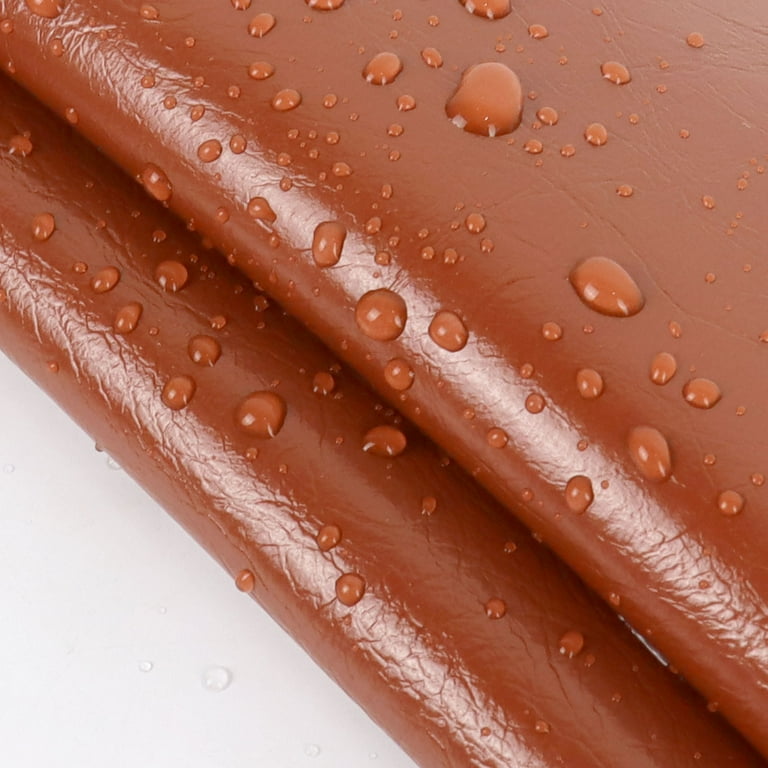
Illustrative image related to waterproof faux leather
-
Understanding Regional Standards: Familiarizing oneself with regional quality standards and regulations is essential. Different markets may have varying requirements for certifications and testing protocols.
-
Cultural Considerations: Recognizing cultural differences in business practices can impact supplier relationships. Effective communication and relationship-building are key to establishing trust and ensuring adherence to quality standards.
-
Logistical Challenges: Shipping and customs procedures can introduce risks to product integrity. Buyers should work closely with suppliers to ensure that quality control measures extend to the logistics phase, mitigating risks of damage during transportation.
In conclusion, understanding the manufacturing processes and quality assurance protocols for waterproof faux leather is crucial for B2B buyers. By focusing on these aspects, buyers can make informed decisions when sourcing faux leather products, ensuring they meet both performance and aesthetic requirements while adhering to international quality standards.
Practical Sourcing Guide: A Step-by-Step Checklist for ‘waterproof faux leather’
Introdução
This guide provides a comprehensive checklist for B2B buyers seeking to procure waterproof faux leather. With the increasing demand for sustainable and cost-effective materials, it’s essential to understand the key factors that influence sourcing decisions. This checklist will help you navigate the procurement process efficiently, ensuring you select high-quality products that meet your business needs.
Step 1: Define Your Technical Specifications
Before initiating the sourcing process, clearly outline the technical specifications of the waterproof faux leather you require. Consider the thickness, texture, color, and intended application—whether for automotive, marine, or upholstery use. This clarity will streamline communication with potential suppliers and ensure you receive samples that meet your exact requirements.
Step 2: Research and Identify Reputable Suppliers
Conduct thorough research to identify suppliers known for high-quality waterproof faux leather. Look for companies with a solid track record in the industry and positive reviews from previous clients. Utilize platforms such as trade directories, industry forums, and social media to gather insights on potential suppliers.
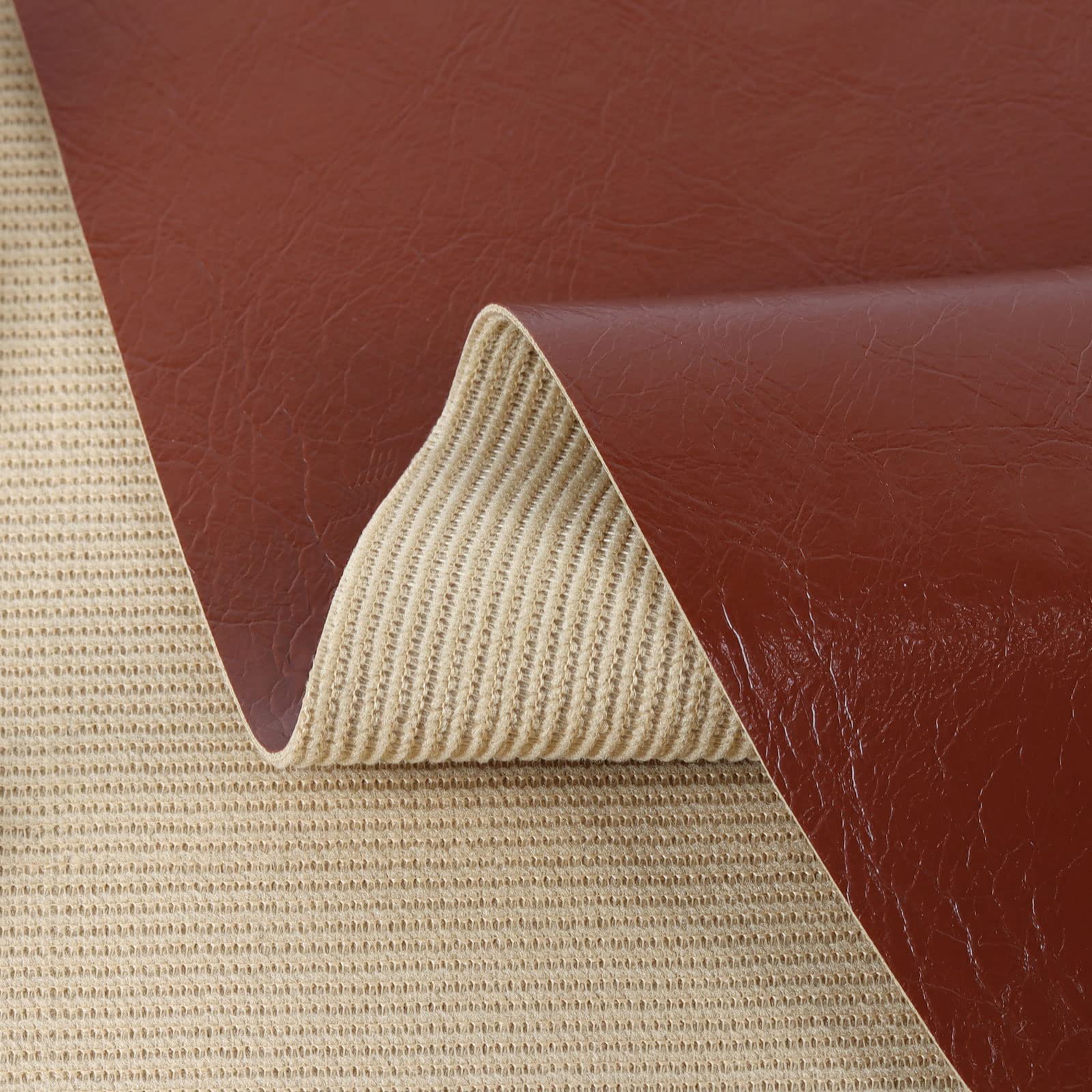
Illustrative image related to waterproof faux leather
- Tip: Focus on suppliers that specialize in your specific application area, as they are likely to have tailored solutions and expertise.
Step 3: Evaluate Product Certifications and Compliance
Ensure that the faux leather products you are considering comply with relevant industry standards and certifications. This may include environmental regulations, safety standards, and certifications for material durability. Valid certifications not only guarantee product quality but also provide assurance of ethical sourcing practices.
- Key Certifications to Look For:
- ISO certifications
- REACH compliance (for EU markets)
- Oeko-Tex Standard 100
Step 4: Request Samples for Quality Assessment
Once you have shortlisted potential suppliers, request samples of their waterproof faux leather products. Evaluate these samples based on texture, durability, and water resistance. Testing the samples in real-world conditions will provide a better understanding of how they perform under your specific application needs.
Step 5: Inquire About Customization Options
Discuss customization options with suppliers to ensure the faux leather can meet your specific branding or design requirements. Many suppliers offer a variety of colors, finishes, and textures that can be tailored to your brand. This flexibility can enhance your product offering and differentiate you in the market.
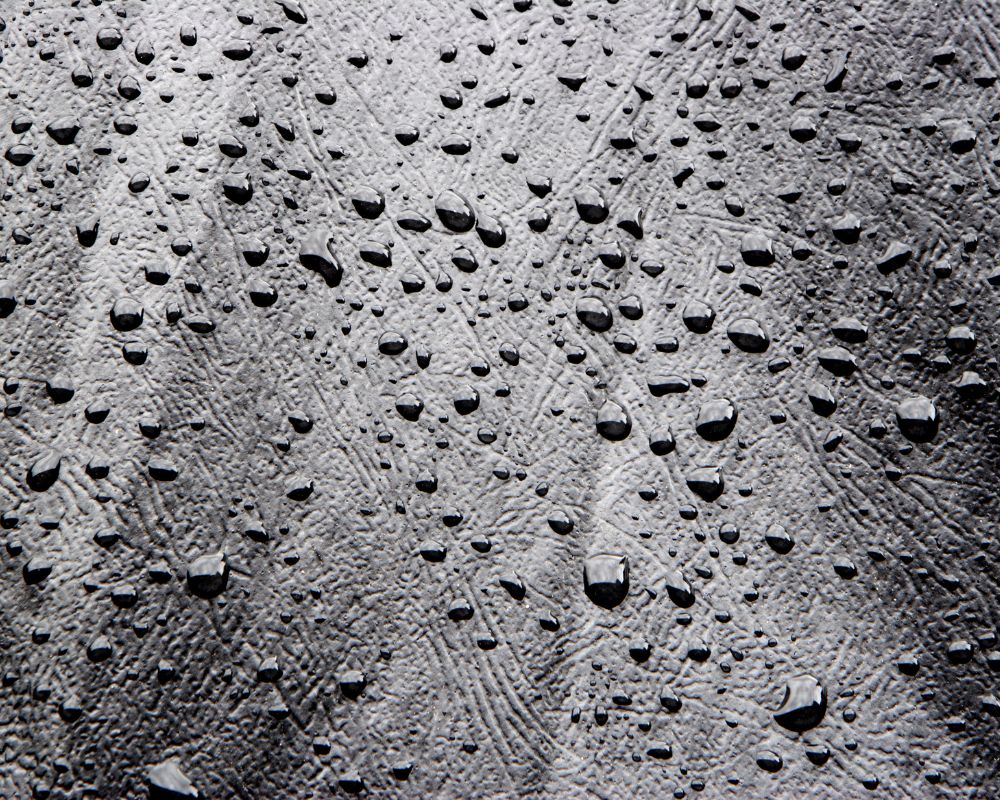
Illustrative image related to waterproof faux leather
Step 6: Negotiate Terms and Pricing
Once you have identified a preferred supplier, engage in negotiations to establish favorable terms and pricing. Be transparent about your budget and volume requirements, as this can lead to more competitive pricing. Don’t forget to discuss payment terms, delivery schedules, and potential discounts for bulk orders.
Step 7: Verify Post-Sale Support and Warranty
Before finalizing your order, ensure that the supplier offers adequate post-sale support and warranty for their products. Understanding their return policy, customer service responsiveness, and warranty terms can protect your investment and provide peace of mind in case of product issues.
By following this checklist, you can confidently navigate the sourcing process for waterproof faux leather, ensuring that you select the right materials to meet your business objectives.
Comprehensive Cost and Pricing Analysis for waterproof faux leather Sourcing
What Are the Key Cost Components in Sourcing Waterproof Faux Leather?
When sourcing waterproof faux leather, understanding the cost structure is essential for effective budgeting and pricing strategy. The primary cost components include:
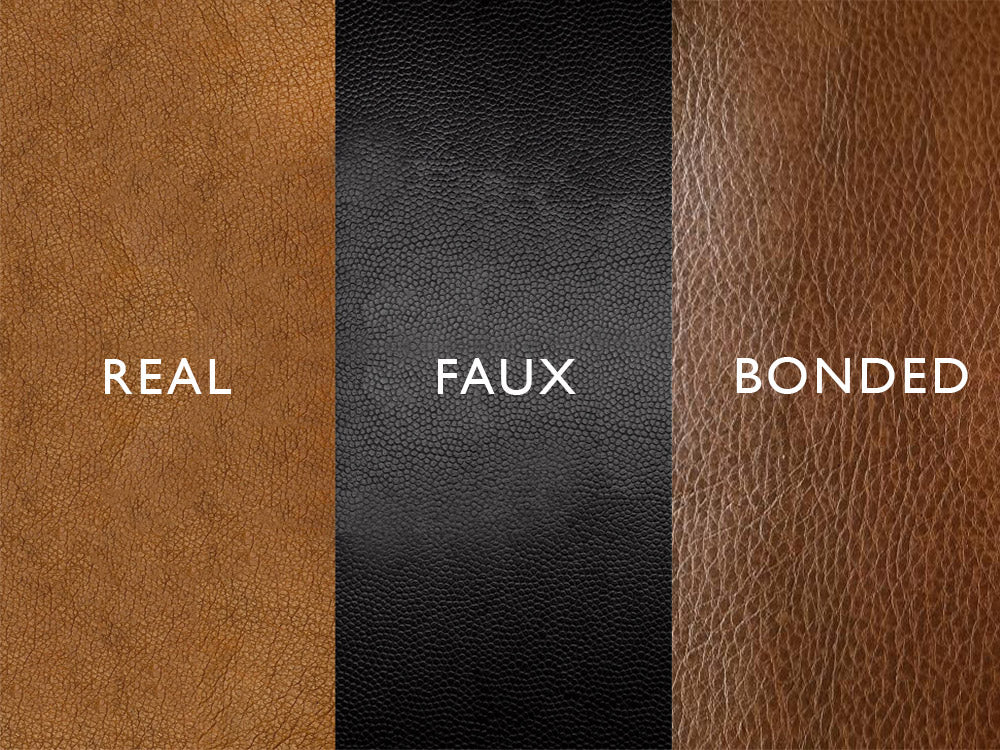
Illustrative image related to waterproof faux leather
-
Materials: The base material for faux leather typically involves synthetic components like polyurethane (PU) or polyvinyl chloride (PVC). The quality and type of these materials significantly impact the overall cost. Higher-grade PU, which mimics genuine leather more closely, often commands a premium.
-
Labor: Labor costs can vary significantly based on the manufacturing location. Regions with lower labor costs may provide competitive pricing, but this can sometimes come at the expense of quality. It’s crucial to assess the skill level of the workforce involved in the production process.
-
Manufacturing Overhead: This includes the indirect costs associated with production, such as facility maintenance, utilities, and administrative expenses. Efficient manufacturing practices can help reduce overhead, thereby lowering the overall cost.
-
Tooling: Initial tooling costs for creating molds and production setups can be significant, especially for customized designs. These costs are often amortized over larger production runs, making it advantageous to order in bulk.
-
Quality Control (QC): Implementing a robust QC process ensures that the faux leather meets industry standards and customer specifications. While this may add to the upfront costs, it can prevent costly returns and enhance customer satisfaction.
-
Logistics: Shipping and handling costs can vary based on the origin and destination of the materials. International shipping may involve additional fees, tariffs, and taxes that need to be factored into the total cost.
-
Margin: Suppliers typically add a profit margin to cover their risks and operational costs. Understanding industry standards for margins can help buyers negotiate better pricing.
How Do Price Influencers Affect the Cost of Waterproof Faux Leather?
Several factors can influence the pricing of waterproof faux leather, including:
-
Volume and Minimum Order Quantity (MOQ): Bulk purchases often result in lower per-unit costs. Negotiating favorable terms based on volume can significantly affect pricing.
-
Specifications and Customization: Custom specifications such as colors, textures, or additional waterproofing treatments can increase costs. Standardized products are usually cheaper due to lower production complexity.
-
Material Quality and Certifications: Higher-quality materials with certifications (e.g., eco-friendly, fire-resistant) typically come at a premium. Buyers should assess the value of these certifications against their specific needs.
-
Supplier Factors: The supplier’s reputation, reliability, and production capacity can impact pricing. Working with established suppliers may provide better quality assurance, though potentially at a higher cost.
-
Incoterms: Understanding the chosen Incoterms (International Commercial Terms) is crucial for cost management. These terms dictate who is responsible for various shipping costs, risks, and liabilities, thus influencing total landed costs.
What Buyer Tips Can Help in Negotiating Costs for Waterproof Faux Leather?
B2B buyers, particularly in regions like Africa, South America, the Middle East, and Europe, can utilize several strategies to enhance their sourcing efficiency:
-
Negotiate Terms: Engage in discussions with suppliers about pricing, payment terms, and delivery schedules. Building a long-term relationship can lead to better deals over time.
-
Consider Total Cost of Ownership (TCO): Evaluate not just the purchase price but the entire lifecycle costs, including maintenance, durability, and replacement. A more expensive but durable product may be more cost-effective in the long run.
-
Understand Pricing Nuances for International Transactions: Currency fluctuations, import duties, and local market conditions can affect pricing. Buyers should conduct thorough market research and consider hedging strategies to mitigate risks.
-
Leverage Technology: Utilize online platforms and procurement software to compare prices, track shipments, and communicate effectively with suppliers. This can streamline the sourcing process and enhance negotiation power.
-
Stay Informed About Market Trends: Keeping abreast of industry trends and innovations can provide insights into potential cost-saving opportunities and new product offerings.
Disclaimer on Indicative Prices
Pricing for waterproof faux leather can vary significantly based on the aforementioned factors. It is advisable to obtain quotes from multiple suppliers and conduct a thorough analysis before making procurement decisions.
Alternatives Analysis: Comparing waterproof faux leather With Other Solutions
Introduction to Alternatives for Waterproof Faux Leather
In the competitive landscape of upholstery materials, waterproof faux leather presents an attractive option for businesses seeking durability and aesthetics without the high costs associated with genuine leather. However, various alternatives exist that also address the need for moisture resistance and overall functionality. Evaluating these alternatives is crucial for B2B buyers looking to make informed purchasing decisions tailored to their specific applications and budget considerations.
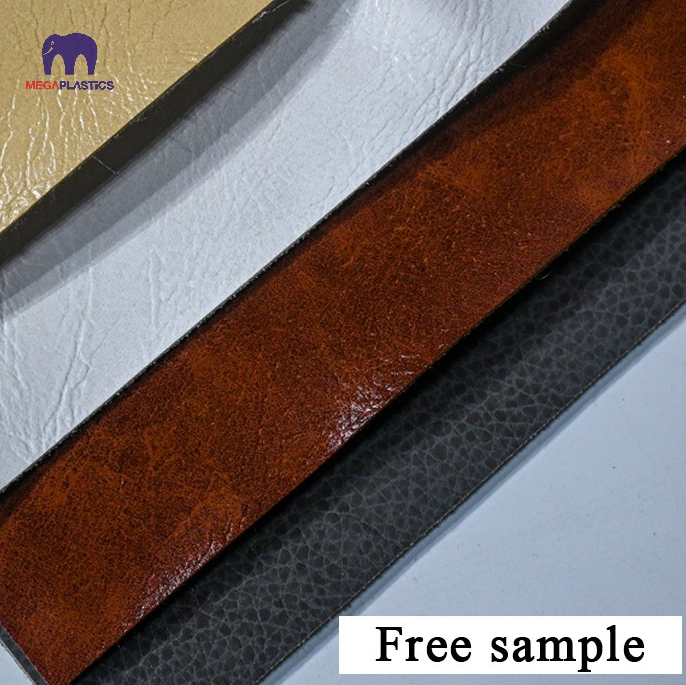
Illustrative image related to waterproof faux leather
Comparison Table
| Comparison Aspect | Waterproof Faux Leather | PVC Vinyl | Genuine Leather |
|---|---|---|---|
| Performance | Highly durable, water-resistant, stain-resistant | Good water resistance, less durable than faux leather | Excellent durability, but can be damaged by moisture |
| Cost | 30-75% less than genuine leather | 20-50% less than faux leather | Generally high, varies by quality |
| Ease of Implementation | Readily available, easy to cut and sew | Easy to work with, available in rolls | Requires specialized skills for cutting and sewing |
| Maintenance | Easy to clean with damp cloth; can benefit from waterproofing | Requires regular cleaning; can be wiped down | Needs conditioning and careful cleaning to maintain appearance |
| Best Use Case | Furniture, automotive, marine applications | Budget-friendly options for upholstery and protective covers | High-end furniture, luxury goods, and bespoke applications |
Detailed Breakdown of Alternatives
PVC Vinyl
PVC vinyl is a popular alternative to waterproof faux leather, known for its affordability and versatility. It offers good water resistance and is commonly used in various applications, including furniture upholstery and protective covers. However, while PVC vinyl is easier to clean than many natural materials, it may not match the durability and aesthetic appeal of faux leather over time. Additionally, it can be less environmentally friendly due to the production processes involved. For businesses focused on budget constraints, PVC vinyl may present a viable option, but it may not provide the same long-term value as waterproof faux leather.
Genuine Leather
Genuine leather stands as the traditional choice for many high-end applications due to its timeless appeal and durability. While it offers excellent performance and can withstand wear and tear, genuine leather is susceptible to moisture damage, requiring careful maintenance and conditioning. The cost of genuine leather can be significantly higher than both waterproof faux leather and PVC vinyl, making it less accessible for budget-conscious buyers. For businesses targeting luxury markets or bespoke applications, genuine leather remains a prestigious option, but they must weigh the higher costs and maintenance requirements against their specific needs.
Conclusion: How to Choose the Right Solution for Your Needs
When selecting the right material for upholstery or protective applications, B2B buyers must consider several factors, including performance, cost, ease of implementation, and maintenance requirements. Waterproof faux leather presents a balanced solution for those seeking durability and ease of care at a lower cost than genuine leather. Meanwhile, PVC vinyl offers a budget-friendly alternative with decent water resistance, though it may lack the longevity and aesthetic appeal of faux leather. Genuine leather, while prestigious and durable, comes with higher costs and maintenance needs. Ultimately, the choice will depend on the specific application, target market, and budgetary constraints of the buyer, ensuring that the selected material aligns with the overall business strategy.
Essential Technical Properties and Trade Terminology for waterproof faux leather
What are the Key Technical Properties of Waterproof Faux Leather?
1. Material Composition
Waterproof faux leather is primarily made from synthetic materials such as polyurethane (PU) or polyvinyl chloride (PVC). These materials are chosen for their durability, flexibility, and water resistance. Understanding the material composition is crucial for B2B buyers, as it directly impacts the product’s performance and suitability for various applications, including upholstery in automotive, marine, and commercial settings.
2. Water Resistance Rating
This rating indicates the level of water resistance the material provides, typically measured in millimeters of water column. A higher rating signifies better water resistance. For businesses operating in humid or wet climates, this property is essential to ensure longevity and performance, preventing issues such as mold or material degradation.
3. Abrasion Resistance
Abrasion resistance measures how well the material withstands wear and tear from friction. This property is particularly important for applications where the faux leather will be subject to constant use, such as in furniture or automotive interiors. A higher abrasion resistance rating means the product will maintain its appearance and functionality over time, ultimately reducing replacement costs.
4. UV Stability
UV stability refers to the material’s ability to resist fading and degradation when exposed to sunlight. This property is critical for outdoor applications or in environments with significant natural light exposure. B2B buyers should consider UV stability to ensure that the faux leather maintains its aesthetic appeal and structural integrity over time.
5. Flexibility and Softness
The flexibility and softness of waterproof faux leather are indicative of its comfort and usability. Materials that mimic genuine leather closely are often preferred for upholstery and fashion applications. For businesses, these attributes can enhance customer satisfaction and product appeal.
6. Fire Retardancy
Some faux leather products are treated to be fire retardant, which is especially important for commercial applications where safety regulations are stringent. Understanding fire safety ratings can help B2B buyers ensure compliance with local laws and enhance the safety of their products.
What are Common Trade Terms Related to Waterproof Faux Leather?
1. OEM (Original Equipment Manufacturer)
OEM refers to companies that manufacture products or components that are used in another company’s end products. In the context of faux leather, an OEM might produce the material that is then used in furniture or automotive manufacturing. Understanding OEM relationships can help buyers navigate supply chains more effectively.

Illustrative image related to waterproof faux leather
2. MOQ (Minimum Order Quantity)
MOQ is the smallest quantity of a product that a supplier is willing to sell. For B2B buyers, knowing the MOQ is crucial for budgeting and inventory management. Suppliers often set MOQs to ensure cost-effectiveness in production, which can impact pricing and availability.
3. RFQ (Request for Quotation)
An RFQ is a standard business process used to invite suppliers to bid on supplying specific goods or services. For faux leather buyers, submitting an RFQ can help in obtaining competitive pricing and understanding available options from different manufacturers.
4. Incoterms (International Commercial Terms)
Incoterms are a set of international rules that define the responsibilities of sellers and buyers for the delivery of goods under sales contracts. Understanding these terms is essential for B2B transactions, as they dictate shipping responsibilities, risk management, and cost allocation.
5. Lead Time
Lead time refers to the amount of time it takes from placing an order to receiving the goods. For businesses, especially those in manufacturing or retail, understanding lead times is crucial for inventory planning and meeting customer demands.
6. Tolerance Levels
Tolerance levels indicate the permissible limits of variation in a product’s specifications. For waterproof faux leather, this can relate to thickness, color consistency, and performance metrics. Knowing these tolerances helps B2B buyers ensure they receive products that meet their quality standards and project requirements.
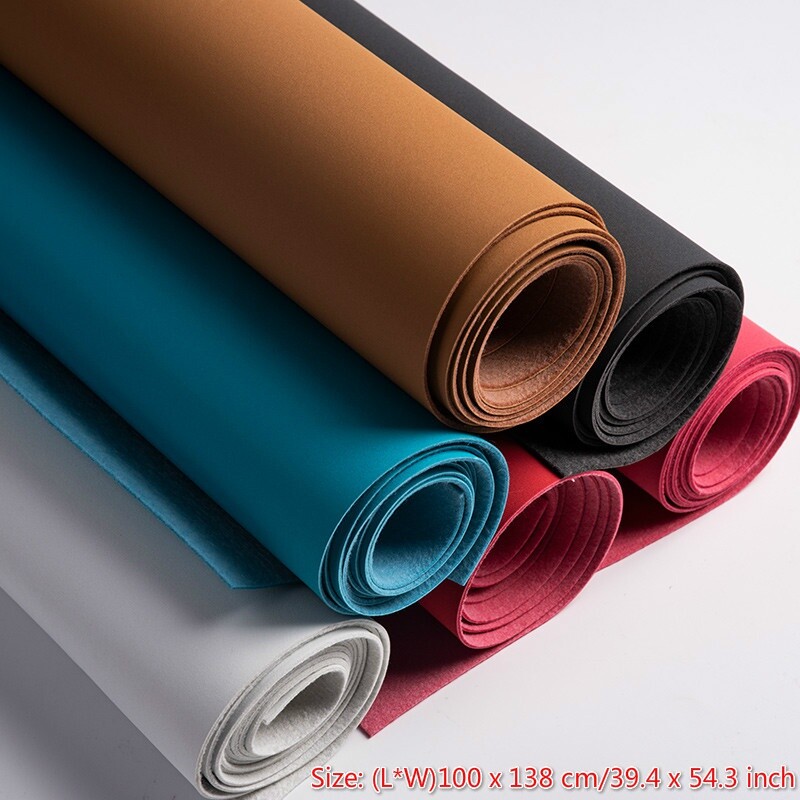
Illustrative image related to waterproof faux leather
Understanding these technical properties and trade terms not only aids in making informed purchasing decisions but also facilitates smoother transactions and better supplier relationships in the competitive B2B marketplace.
Navigating Market Dynamics and Sourcing Trends in the waterproof faux leather Sector
What Are the Current Market Dynamics and Key Trends in Waterproof Faux Leather?
The waterproof faux leather market is witnessing dynamic shifts driven by several global factors. Firstly, the increasing demand for cost-effective and durable materials in industries such as automotive, furniture, and fashion is propelling the use of faux leather as a viable alternative to genuine leather. Emerging markets in Africa, South America, and the Middle East are particularly influential due to their growing middle class and rising disposable incomes, which drive consumer demand for affordable luxury products. Additionally, the expansion of e-commerce platforms enables international B2B buyers to access diverse suppliers and product ranges, enhancing sourcing efficiency.
Technological advancements are also reshaping the market. Innovations in manufacturing processes, such as the development of advanced polyurethane (PU) coatings, have improved the durability and aesthetic appeal of faux leather. This shift is particularly relevant for applications requiring waterproofing, as these materials can withstand moisture while maintaining a leather-like appearance. Furthermore, trends towards customization and personalization are emerging, with suppliers offering a variety of colors, textures, and finishes tailored to specific client needs. B2B buyers should stay attuned to these trends to leverage competitive advantages in their sourcing strategies.
How Important Is Sustainability and Ethical Sourcing in the Faux Leather Sector?
Sustainability is becoming a critical consideration in the sourcing of waterproof faux leather. As global awareness of environmental issues rises, buyers are increasingly seeking materials that minimize ecological impact. Faux leather, primarily made from synthetic materials, presents a lower carbon footprint compared to traditional leather production, which involves significant resource use and animal welfare concerns. However, the environmental impact of synthetic materials, particularly those derived from non-renewable resources, remains a challenge.
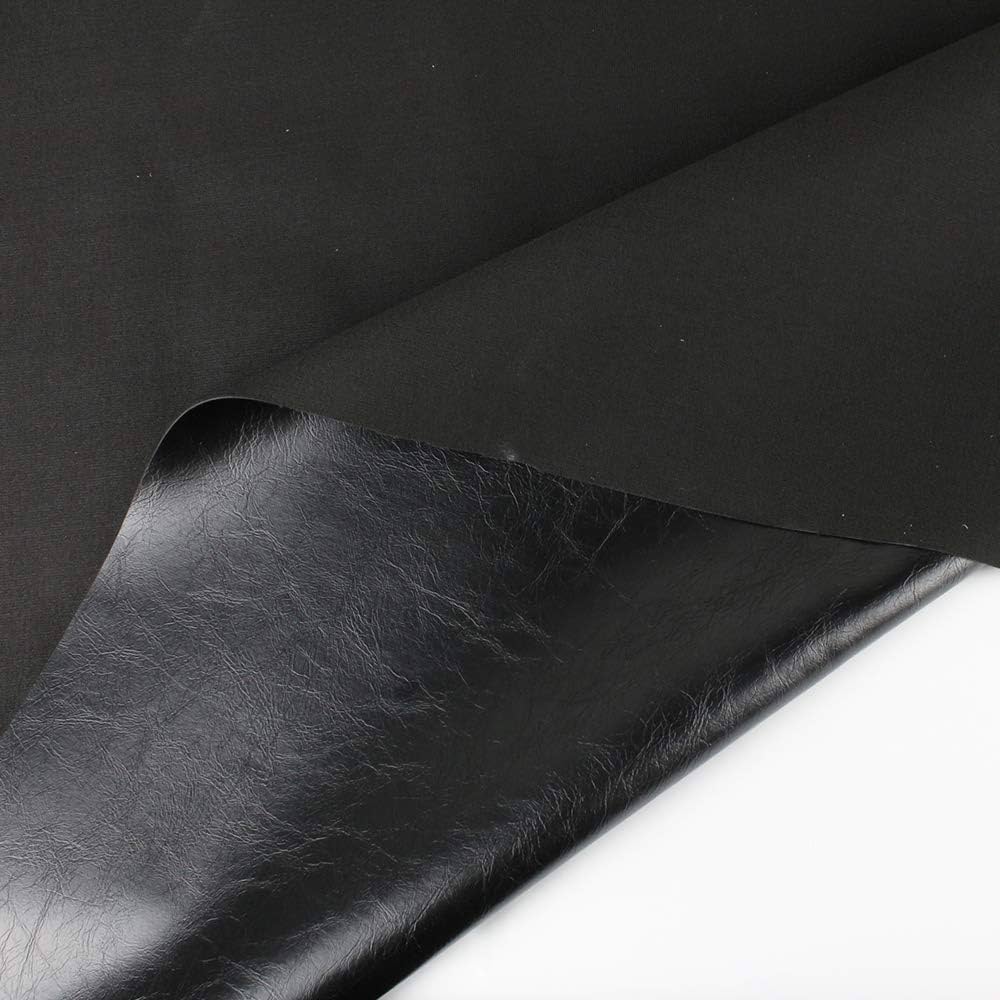
Illustrative image related to waterproof faux leather
Ethical sourcing practices are gaining traction, with B2B buyers prioritizing suppliers who demonstrate a commitment to sustainable production processes. Certifications such as Global Recycle Standard (GRS) and OEKO-TEX® Standard 100 are becoming essential indicators of responsible sourcing, ensuring that materials used are free from harmful substances and produced in environmentally friendly conditions. Buyers should consider these certifications when selecting suppliers, as they not only enhance brand reputation but also align with consumer preferences for sustainable products.
What Is the Historical Context of Waterproof Faux Leather Development?
The evolution of waterproof faux leather dates back to the early 20th century, with significant advancements in synthetic material technology. Initially developed as a cost-effective substitute for genuine leather, faux leather gained traction due to its durability and ease of maintenance. The introduction of polyurethane (PU) in the 1960s marked a significant milestone, allowing manufacturers to create softer, more supple materials that closely mimic the appearance and feel of real leather.
Over the years, the demand for waterproof applications has fueled further innovations. Manufacturers began applying specialized coatings to enhance water resistance and stain protection, making faux leather suitable for various environments, including outdoor and marine applications. This historical progression has positioned waterproof faux leather as a versatile option for B2B buyers seeking reliable, aesthetically pleasing, and economically viable materials for their projects. As the market continues to evolve, staying informed about these historical developments can provide valuable context for sourcing decisions.
Frequently Asked Questions (FAQs) for B2B Buyers of waterproof faux leather
-
How do I solve the issue of waterproofing faux leather products?
To ensure the longevity of faux leather products, especially in humid or wet environments, regular waterproofing is essential. You can apply a waterproofing spray, wax, or a specialized leather conditioner to create a protective barrier. This process is straightforward: first, clean the surface to remove dirt and oils, then evenly apply the chosen product, allowing it to dry thoroughly. Regular application every few months will help maintain the material’s integrity and appearance, preventing mold and degradation. -
What is the best type of waterproof faux leather for outdoor furniture?
For outdoor furniture, look for faux leather specifically designed for weather resistance. Polyurethane (PU) faux leather tends to be more durable and offers excellent water resistance compared to PVC options. Additionally, ensure the product is treated with UV protection to prevent fading and cracking from sun exposure. Verify that the supplier provides samples or specifications that confirm the material’s suitability for outdoor use, especially in regions with extreme weather conditions. -
What are the key factors to consider when sourcing waterproof faux leather suppliers?
When sourcing suppliers, prioritize those with a proven track record in producing high-quality waterproof faux leather. Evaluate their certifications, production capabilities, and adherence to international quality standards. Look for suppliers who offer transparency in their manufacturing processes, including sourcing of materials and environmental considerations. It’s also beneficial to request samples and reviews from previous clients to gauge product quality and supplier reliability. -
How can I customize waterproof faux leather products for my business?
Customization options for waterproof faux leather can include variations in color, texture, and thickness. Many suppliers offer bespoke services, allowing you to specify your desired characteristics. When discussing customization, provide clear specifications, including the intended application and any performance requirements. Be prepared for potential minimum order quantities (MOQs) and lead times that may vary based on the complexity of your customization requests. -
What are the typical minimum order quantities (MOQs) for waterproof faux leather?
MOQs can vary significantly between suppliers, often ranging from 100 to 1,000 yards, depending on the type of faux leather and the supplier’s production capabilities. It’s essential to communicate your needs clearly and inquire about flexibility in MOQs, particularly if you are testing a new product line. Some suppliers may offer lower MOQs for custom orders, especially if they are looking to establish a long-term business relationship. -
What payment terms should I expect when importing waterproof faux leather?
Payment terms can vary based on the supplier and the nature of your transaction. Common terms include a deposit upon order confirmation (usually 30% to 50%) with the balance due prior to shipping. Some suppliers may offer net payment terms (e.g., net 30 or net 60 days) for established clients. Always negotiate terms that align with your cash flow and ensure that you receive a formal proforma invoice outlining all costs, including shipping and customs duties. -
How do I ensure quality assurance (QA) for imported waterproof faux leather?
To maintain quality assurance, request detailed product specifications and certifications from your supplier. Implement a QA process that includes pre-shipment inspections, where a third-party service checks the products against your quality criteria. It’s also advisable to conduct periodic audits of your suppliers to ensure compliance with your standards and address any potential issues before they escalate. -
What logistics considerations should I keep in mind when importing waterproof faux leather?
When importing waterproof faux leather, consider the shipping method (air vs. sea), which will impact delivery time and costs. Ensure that you understand the customs regulations in your country, including tariffs and import duties that may apply. Collaborate with a freight forwarder experienced in handling textiles to streamline the logistics process. Additionally, maintain communication with your supplier regarding shipping schedules to anticipate any potential delays.
Top 4 Waterproof Faux Leather Manufacturers & Suppliers List
1. Naugahyde – PU Leather & Faux Leather
Domain: decorativefabricsdirect.com
Registered: 2004 (21 years)
Introduction: PU Leather & Faux Leather | Vinyl Upholstery Fabric. Terms: Free Shipping Coupon Code: SHIPFREE for Most $199 Orders. Available for wholesale purchase by the yard or full roll. Key brands include Naugahyde, Omnova Boltaflex, Nassimi, and Spradling. Suitable for furniture, automotive, marine, and commercial projects. Features: Durable, easy to clean, available in rich colors, and significantly lowe…
2. Liberty Leather Goods – Faux Leather Waterproofing Solutions
Domain: libertyleathergoods.com
Registered: 2018 (7 years)
Introduction: Waterproofing faux leather protects the material and finish from breakdown due to moisture. It can be done using waterproofing spray, wax, or leather conditioner. Regular application prolongs the lifespan and maintains the aesthetic appeal of faux leather. Not all faux leather is the same; some are made with non-porous materials and considered waterproof, while others have synthetic fibers that cr…
3. Leafy Souls – Faux Leather Essentials
Domain: leafysouls.com
Registered: 2018 (7 years)
Introduction: Faux leather, also known as synthetic or vegan leather, is a cruelty-free and affordable alternative to real leather. It is generally considered water-resistant, especially high-quality polyurethane (PU) versions, but can be vulnerable to heavy rain. The water resistance and durability depend on the material quality and protective waterproof coating. Regular maintenance, including cleaning with mi…
4. Panini Tessuti – Waterproof Faux Leather Fabric Collection
Domain: paninitessuti.com
Registered: 2018 (7 years)
Introduction: Waterproof Faux Leather Fabric Collection includes various types of faux leather such as fire retardant, embossed, and medium weight options. The fabric is made from polyurethane fibers and PVC, making it suitable for outdoor upholstery like sofas, chairs, and cushions for boats, as well as garden or terrace furniture. The collection features a wide range of colors including black, dark green, bei…
Strategic Sourcing Conclusion and Outlook for waterproof faux leather
Waterproof faux leather presents a compelling opportunity for international B2B buyers seeking cost-effective, durable, and aesthetically appealing materials. The strategic sourcing of this versatile alternative to genuine leather not only offers significant cost savings—up to 75% less than traditional leather—but also ensures resilience in various applications, from automotive upholstery to marine environments. Its inherent waterproof and stain-resistant properties, complemented by easy maintenance, make it an ideal choice for businesses operating in diverse climates.
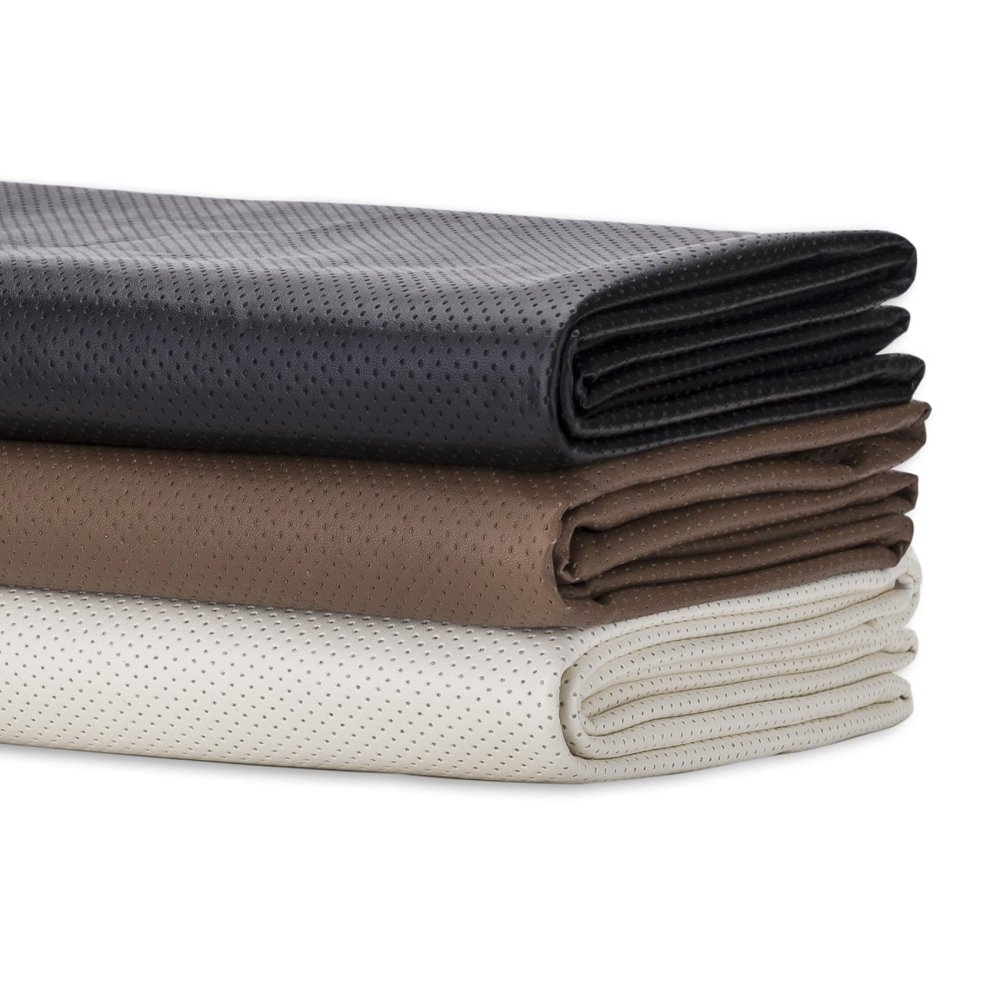
Illustrative image related to waterproof faux leather
As buyers consider their sourcing strategies, understanding the nuances of faux leather, including its waterproofing options, will be crucial. Different suppliers may offer varying levels of moisture resistance and maintenance requirements, so thorough supplier evaluation is essential.
Looking ahead, the demand for sustainable and animal-friendly materials will continue to shape the market landscape. By prioritizing strategic partnerships with suppliers who demonstrate innovation and quality, buyers can position themselves advantageously in a competitive marketplace.
Engage with trusted manufacturers and distributors to explore the latest advancements in waterproof faux leather. Together, we can redefine standards in upholstery and beyond, ensuring quality and sustainability for future projects.
Important Disclaimer & Terms of Use
⚠️ Important Disclaimer
The information provided in this guide, including content regarding manufacturers, technical specifications, and market analysis, is for informational and educational purposes only. It does not constitute professional procurement advice, financial advice, or legal advice.
While we have made every effort to ensure the accuracy and timeliness of the information, we are not responsible for any errors, omissions, or outdated information. Market conditions, company details, and technical standards are subject to change.
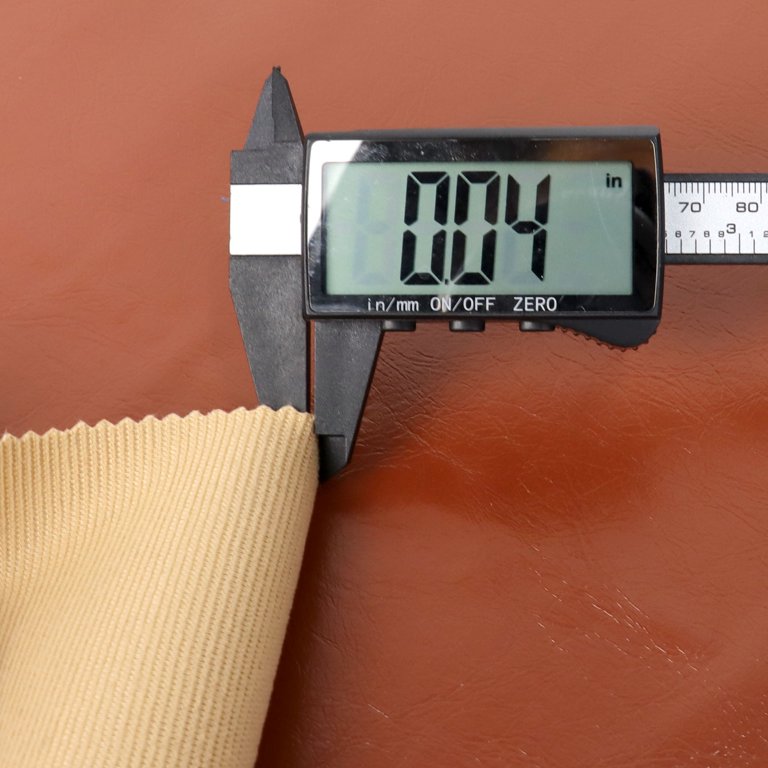
Illustrative image related to waterproof faux leather
B2B buyers must conduct their own independent and thorough due diligence before making any purchasing decisions. This includes contacting suppliers directly, verifying certifications, requesting samples, and seeking professional consultation. The risk of relying on any information in this guide is borne solely by the reader.


